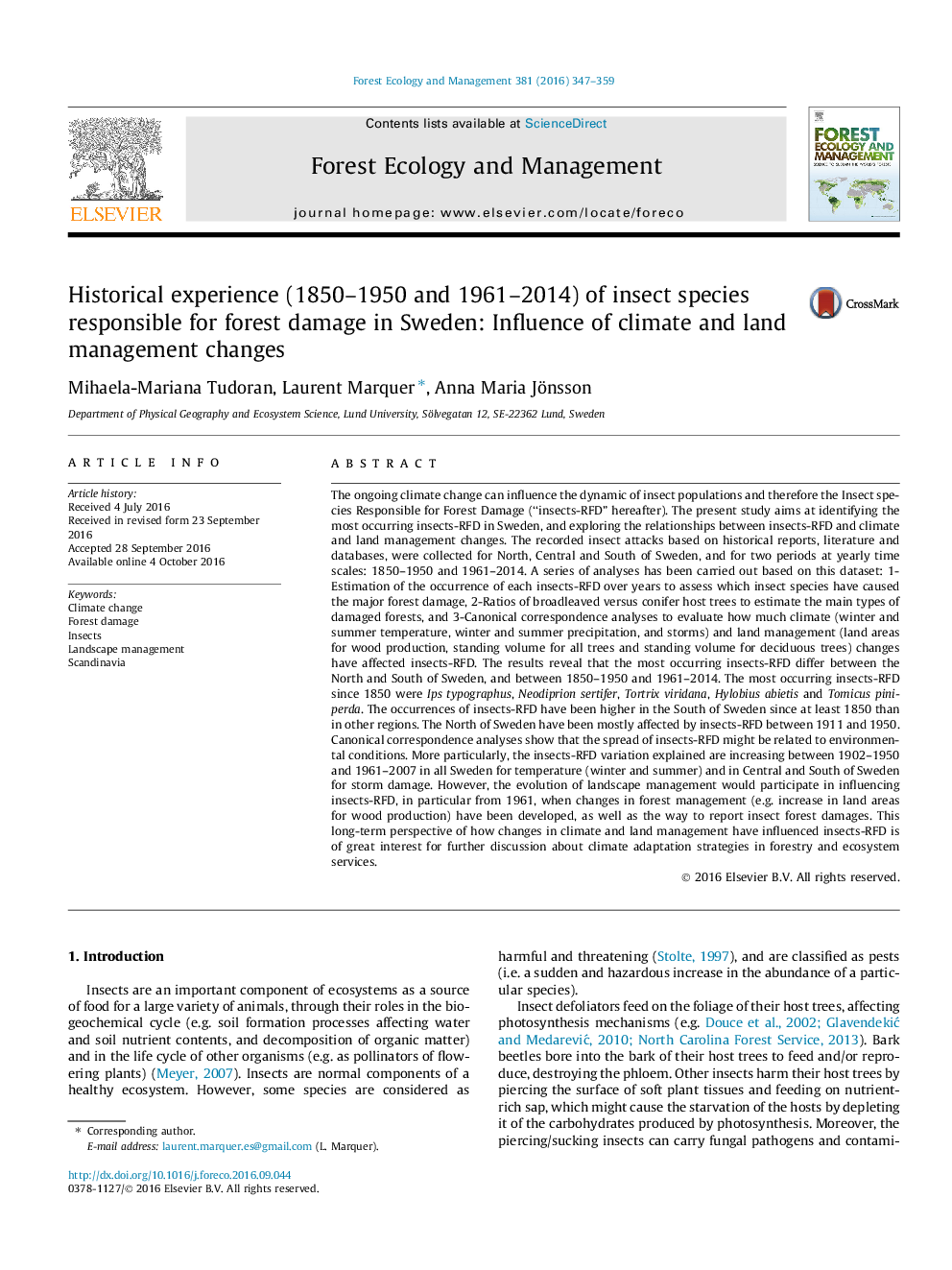| کد مقاله | کد نشریه | سال انتشار | مقاله انگلیسی | نسخه تمام متن |
|---|---|---|---|---|
| 6459585 | 1421377 | 2016 | 13 صفحه PDF | دانلود رایگان |

- Insects have attacked conifer and broadleaved host trees reflecting the landscape.
- Conifers are the major attacked trees by insects since at least 1850.
- Insect pests are poorly correlated to environmental conditions between 1902 and 1950.
- Increasing role of environmental conditions on insect pests from 1961.
- Potential for climate mitigation of land management options to prevent insect pests.
The ongoing climate change can influence the dynamic of insect populations and therefore the Insect species Responsible for Forest Damage (“insects-RFD” hereafter). The present study aims at identifying the most occurring insects-RFD in Sweden, and exploring the relationships between insects-RFD and climate and land management changes. The recorded insect attacks based on historical reports, literature and databases, were collected for North, Central and South of Sweden, and for two periods at yearly time scales: 1850-1950 and 1961-2014. A series of analyses has been carried out based on this dataset: 1-Estimation of the occurrence of each insects-RFD over years to assess which insect species have caused the major forest damage, 2-Ratios of broadleaved versus conifer host trees to estimate the main types of damaged forests, and 3-Canonical correspondence analyses to evaluate how much climate (winter and summer temperature, winter and summer precipitation, and storms) and land management (land areas for wood production, standing volume for all trees and standing volume for deciduous trees) changes have affected insects-RFD. The results reveal that the most occurring insects-RFD differ between the North and South of Sweden, and between 1850-1950 and 1961-2014. The most occurring insects-RFD since 1850 were Ips typographus, Neodiprion sertifer, Tortrix viridana, Hylobius abietis and Tomicus piniperda. The occurrences of insects-RFD have been higher in the South of Sweden since at least 1850 than in other regions. The North of Sweden have been mostly affected by insects-RFD between 1911 and 1950. Canonical correspondence analyses show that the spread of insects-RFD might be related to environmental conditions. More particularly, the insects-RFD variation explained are increasing between 1902-1950 and 1961-2007 in all Sweden for temperature (winter and summer) and in Central and South of Sweden for storm damage. However, the evolution of landscape management would participate in influencing insects-RFD, in particular from 1961, when changes in forest management (e.g. increase in land areas for wood production) have been developed, as well as the way to report insect forest damages. This long-term perspective of how changes in climate and land management have influenced insects-RFD is of great interest for further discussion about climate adaptation strategies in forestry and ecosystem services.
Journal: Forest Ecology and Management - Volume 381, 1 December 2016, Pages 347-359